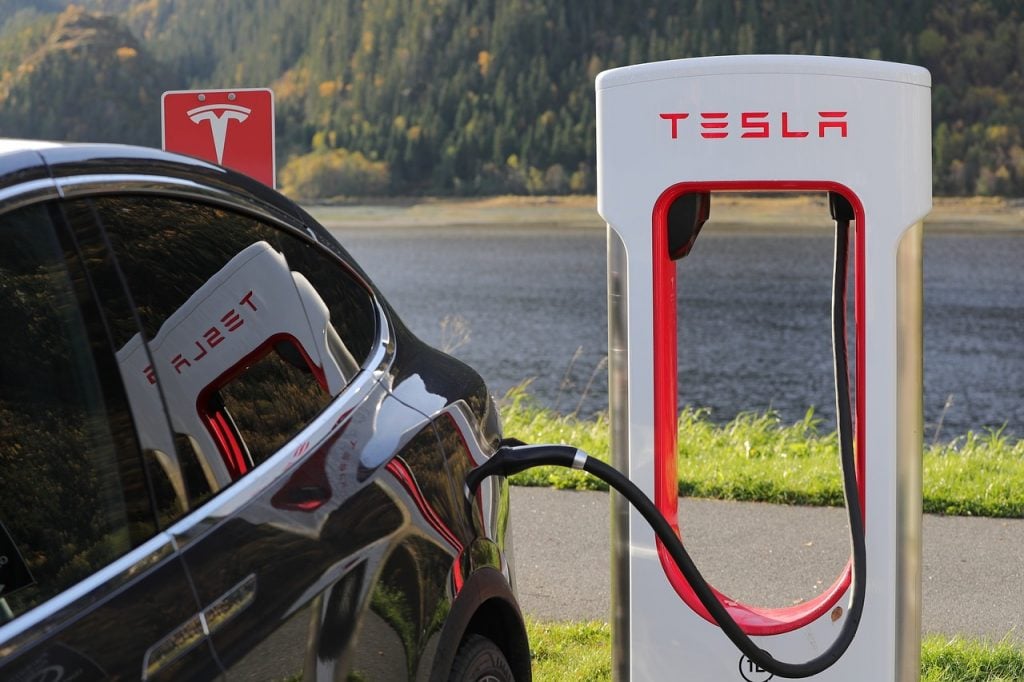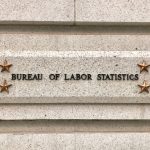Whitney Tilson’s email to investors discussing Tesla Inc (NASDAQ:TSLA)’s Q2 delivery numbers; Tweets; Tesla’s unit growth, and the art of spurious comparisons; great insights from friends.
1) Thanks for the feedback. Here’s my updated blurb for tomorrow (comments still welcome!):
Q2 hedge fund letters, conference, scoops etc
As for Tesla (TSLA), I have mixed feelings due to the fact that we’re in a period of uncertainty for the next month until the company reports second quarter earnings on or about August 7th.
On Tuesday, the company reported that it delivered 95,200 cars during the quarter, more than I (or pretty much anyone) expected. The stock rose 4.6% of Wednesday and is now up more than 30% since it bottomed a month ago, as the market began to incorporate indications that deliveries were picking up.
Bulls view the delivery number as proof that demand is strong and will propel the company to greater heights going forward, but I’m skeptical. There were a number of one-time factors at work:
- They introduced the Model 3 Standard Range Plus in the U.S., a lower-priced car that stimulated demand, but how sustainable is it and what will be the cost to margins?
- The federal tax credit for all Tesla buyers fell from $3,750 in the first half of the year to $1,875 on July 1, which pulled forward demand. This might explain why the U.S. accounted for roughly 70% of sales in the second quarter vs. less than 50% in Q1. Recall what happened the last time the tax credit dropped – at the end of 2018, from $7,500 to $3,750. We now know that this helped Tesla report big sales in Q4 ‘19, but then Q1 was a disaster. Could we see the same dynamics at work from Q2 to Q3 this year?
- They might have sold quite a few cars to distributors, which they booked as sales but don’t reflect final sales to customers.
In addition to these questions about the sustainability of demand, I have even bigger questions about margins. Tesla not only sold more lower-priced Model 3s – this tweet estimates that its average selling prices plunged from $56,812 in Q1 to $49,492 in Q2 – but also had an unfavorable shift in product mix. The company makes a lot more money selling its higher-priced cars, the Models S and X, than the 3, yet Q2 deliveries were heavily skewed toward the latter. Comparing Q2 deliveries to last year’s fourth quarter (ignoring the unusually weak first quarter), Model S and X sales combined tumbled 36% while Model 3 sales jumped 22%, which does not bode well for margins.
To summarize, I see three possible scenarios for the rest of the year. The first (and least likely – maybe 20% odds) is that the better-than-expected delivery number for Q2 is indicative of a genuine and sustainable surge in demand that catapults the company back to profitability in the second half of the year. In this case, I see the stock going back above $300.
The second scenario (roughly 40% odds) is that the tidal wave of EVs that are being developed by nearly every major manufacturer in the world only trickles into the market this year, which allows Tesla to retain its first-mover advantage for a little longer. In this case, Q3 and Q4 might look like Q2, with decent sales and moderate losses – and no end to the bull-bear debate. In this case, the stock would likely trade in a range where it is now between $200 and $250.
The final scenario (also 40% likely) is that the one-time items that stimulated demand in Q2 fade and the tidal wave of competition hits soon. If so, Tesla will struggle to sell all of the cars it’s producing, with associated sales and margin misses and big losses. In this case, I see the stock sinking toward my $100 price target by year end.
2) Here are some tweets with data about the big drop in average selling price, the frantic delivery rush at the end of the quarter, and the mix skewed toward the SR+ (which doesn’t bode well for margins): https://twitter.com/CovfefeCapital/status/1146126842040147970
3) An article by puppyeh: Tesla’s unit growth, and the art of spurious comparisons. Excerpt:
Lost in the bullish headlines this morning is the simple reality that in Q4’18, TSLA was only selling the Model 3 in the US (its core market); by now the Model 3 is available worldwide (with the exception of some very small right-hand drive markets) – tenuously equivalent to opening a vast number of new ‘stores’ to achieve a marginal increase in sales. Instead, if we look purely at the US market, where the Model 3 has been out for the entire year (both 2H 2018 and 1H 2019), the unit performance looks unimpressive to say the least: Model 3 deliveries fell 42% half-on-half in 1H’19 versus 2H’18 (67k vs 116k, per InsideEVs). Incidentally, this half-on-half decline is mirrored in the performance of the Model S (-52% HoH) and Model X (-46%) as well.
In other words, in Tesla’s most mature market – and despite significant price cuts and the introduction of the much lower-priced Model 3 SR+ – unit sales are falling rapidly half-on-half.
4) Here are some great insights from various friends:
I think the car sales were better for 3 reasons:
- They introduced the SR+ in the US
- They gamed the Canadian subsidy (this stops now)
- They sold cars in fleets to distributors ahead of final sales to customers. (Sell in vs sell through)
As you know I worked at Tesla for 3.5 years in what is now the energy business after the acquisition of SolarCity. So I still have tentacles into the company. My immediate reaction to your piece is that Tesla’s financials won’t be as bad as expected and the strength of growing demand in China and Europe AND the lack of any real competition emerging over the next 6 months suggests to me that its extremely unlikely that the stock price will crater by 60% by year’s end. Every car company of substance planning to offer EVs have announced launch dates in late 2020, 21 and 22 so I don’t see that being a factor at all this year. Even so, Tesla’s first mover advantage is huge and the company certainly isn’t standing still in advancing the technology and products.
As long as sales continue to be solid, which I think will be the case over the next few quarters there seems to be a Tesla investors fan club always willing to prop up the stock, starting with Larry Ellison who as you know has invested a billion.
I think that one has to dig a little deeper than just concluding that Tesla will indeed sell close to 360,000 cars in 2019. That’s the low end of guidance. But even if Tesla sold 380,000, so what?
The street is showing signs of getting impatient with Tesla not only showing that it can meet guidance -- as opposed to having to beat it by wide margins, just like any other momentum growth story. Rather, the street is -- slowly, perhaps -- finally turning its attention to profitability and the other balance sheet and cash flow considerations.
As with so many other stories, past and present, some of the bears are often too bearish. I think Tesla will get close to selling 360,000 cars this year. I think I went on record in early March to say they were going to hit 335,000. With 158,000 in the first half, and 90,000 each in Q3 and Q4, that’s just about where they would be. It would match the production output from Fremont.
Gee whiz -- the company would sell essentially the same number of units as it produced! Who would have thought?
Where could I be wrong? Most likely, China. If China production amounts to more than a rounding error before year-end 2019, then I think Tesla might sell more than 335,000-ish cars in 2019.
Still, none of that may end up being as relevant to the street anymore. The street is growing impatient regarding the financial statements, and the street will only see more competition arriving and/or being announced in the coming months. All of that ought to contribute to multiple compression.
I’m not wild about your third paragraph. Don’t be so hard on yourself here. It looks like you are falling for “hindsight bias.” Through June, it wasn’t obvious to most followers of Tesla that they would hit their delivery guidance. The top analysts you were following were almost all predicting below 90,000.
Also, auto manufacturers often sit on inventory (in most cases their dealers sit on much of it) if models don’t sell quickly. This inventory sits around for many months in some cases. So, yes they sell what they produce, but it can take many months at times; while super-popular car models can quickly and continuously sell out of stock.
To me, the financials make the biggest impact in terms of the medium-term investment decision. If Tesla is likely to report negative net income for most quarters, and continue to pile on debt, then the company won’t be able to remain a going concern. They won’t be like GM in 2009 and get bailed out by the U.S. federal government.
Also, let’s not lose sight of the high value currently being placed on Tesla shares, in terms of market capitalization and enterprise value relative to total revenue. The share price simply isn’t sustainable in the long term unless Musk can pull some rabbits out of his hat that start producing high levels of operating income (not unlike AWS coming from nowhere at Amazon within the last few years).
So, if the thesis continues to play out as you suspect, then Tesla as a company will go bankrupt, or possibly get saved by some sort of buyout from another company. It’s just going to take time to play out. The European electric-vehicle credits going to Tesla for free are certainly helping out Tesla for the short term.
Competition from very strong competitors will be a key to Tesla’s demise. Toyota, Honda, VW, Ford, etc. are very experienced at all aspects the business. They are very serious and competent competitors. And they are backstopped by their federal governments. Witness what happened to Ghosn when Japan decided they were tired of a non-Japanese CEO.
One problem that the traditional car manufacturers and their dealer network has, especially in the United States is that many of the car dealers don't like to sell electric vehicles. This is most likely due to the lower maintenance required for EVs and the longer sales cycle.
Here is a recent parody starring Arnold Schwarzenegger as a car salesman trying to convince customers interested in an EV to buy a gas car: https://www.youtube.com/watch?v=rXodSqMpuUQ
I think the new EVs that are coming will help enlarge the market more than they will hurt Tesla sales. Their advertisements should actually increase awareness and help Tesla, while their dealers dither.













